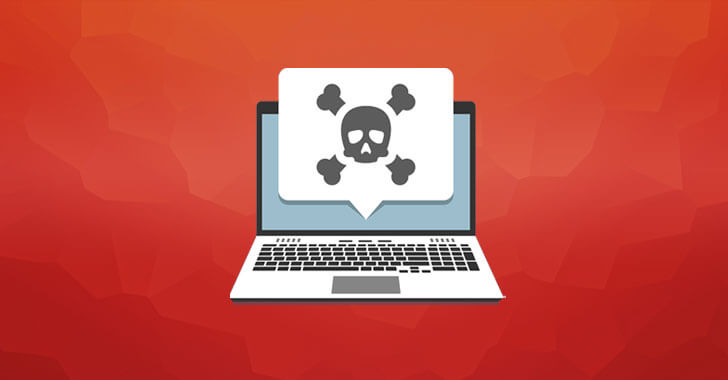A malicious program intended to cause havoc with IT systems—malware—is becoming more and more sophisticated every year. The year 2021 is no exception, as recent trends indicate that several new variations of the malware are making their way into the world of cybersecurity.
While smarter security solutions are popping up, modern variations of the malware still elude and challenge cybersecurity experts.
The evolution of malware has infected everything from personal computers to industrial units since the 70s. Cybersecurity firm in2020 by hackers with the most sophisticated form of hacking i.e., supply chain.
This hacking team demonstrated world-class capabilities to disregard security tools and forensic examination, proving that anybody can be hacked. Also, the year 2021 is already witnessing a bump in COVID-19 vaccine-related phishing attacks.
Let’s take a look at the trends that forecast an increase in malware attacks:
COVID-19 and Work-from-Home (WFH)
In the wake of the COVID-19 pandemic last year, many companies offered remote access to their workforce. Poor remote infrastructure made their networks considerably less open and exposed. Recent research by Deloitte indicates that cybercriminals are exploiting the COVID-19 environment to attack companies, as approximately 24% of employees reported an increase in spam, fraudulent e-mails, and phishing attacks.
As many as 26% of employees keep copies of their company’s important data in case of technical difficulty when working remotely. This also poses serious data theft security concerns. This puts remote-working organizations at risk to hackers who use modern malware to target them.
Evolution of Malware Variations in Q1 2021
This year has already seen several new malware variations appear. As of February 2021, some of the most dangerous malware reported can be seen as follows –
Fake updates through e-mail —This method involves hackers sending a phony e-mail to users telling them that there is an important update to install. The update is ransomware that encrypts users’ documents. By blackmailing the user with severe consequences, including data theft, then asks for a ransom.
News updates — Cybercriminals send electronic news updates to users in this kind of attack. If the users unknowingly click one of these links, they provide the hackers with free access to their devices.
AI and IoT attacks — The new trend in cybercrime is that criminals create some of the most deadly viruses using Artificial Intelligence to get inside any network. Moreover, they can penetrate IoT devices to gain access to confidential information like passwords.
Cryptojacking — A hacker installs Crypto Jacking malware on mobile phones or computers and mines cryptocurrencies.
Clop — Runs on Windows by blocking its different processes, Clop Ransomware that encrypts user files undetected.
RaaS — Also known as Ransomware as a Service, has been hailed as one of the most widespread malware distribution methods this year. The term refers to cybercrime as a service provided by a network of hackers for someone else.
Route to Adequate Malware Protection
In today’s environment of increasing complexity and advances in malware threats, it is imperative to safeguard against malware.
Learning and Adapting
Cybercriminals now use a variety of malicious software to compromise a computer system at every stage. For example, hackers can use phishing techniques to gain access to a network then use Emotet to spread across the system by exploiting network loopholes. After that, the attackers use malware such as Trickbot to collect valuable information such as financial details, customer details, credit card details, etc. In the final stage, malware like Conti would encrypt the files and ask for ransom.
Security teams can stay updated with the best information on the latest variants, capabilities, and potential impact if they know how the malware operates at various stages in a system. Knowing this information will allow them to devise protective measures against the network’s resources.
Reducing remote work-related security vulnerabilities
With the outbreak of the Coronavirus in early 2020, the work environment changed dramatically. It has been almost a year since the virus made employees stay indoors. With the proliferation and thinning of network perimeters, WFH has exposed its infrastructure to malware threats. Because of this, organizations must take into consideration the WFH’s cybersecurity arrangements. Furthermore, they must use robust security software on employee systems and use VPN for all work-related activities on the internet.
Employee awareness
Employees play a vital role in ensuring their company’s cybersecurity bubble remains intact. Many malware campaigns begin by sending an e-mail communication to employees. To learn basic cybersecurity hygiene, employees must become familiar with password management, identify and report security threats, and recognize suspicious behavior. Regular content and training will assist employees in countering any malware threats they encounter.
Adopt a Culture of Comprehensive Security
Given the ongoing evolution of malware attacks and their capability to surpass what they were capable of, organizations should prioritize a strong malware protection strategy. Consultation with experienced cybersecurity experts like Indusface can help them create a solution that meets their needs.
Article Provided By: Hacker News
![]()
If you would like liquidvideotechnologies.com to discuss developing your Home Security System, Networking, Access Control, Fire, IT consultant, or PCI Compliance, please do not hesitate to call us at 864-859-9848 or you can email us at deveren@liquidvideotechnologies.com.


Recent Comments